HOSTS- Jeremy Burns, Matthew Scott Phillips
TYPE- Theory
DURATION- 31:31
BUMPER MUSIC- "Iwato, Alabama" (Area 47 Music)
ANNOUNCER- Mike Cunliffe
Pentatonic scales are five note scales that span the length of an octave. Major and minor scales, along with their respective modes, are all considered "heptatonic" or
"seven note" scales. These scales also have five note subsets that are easier to learn and recognize. They are also more universally used across the globe. In this episode, we will discuss the major and minor pentatonic scales of the west and several others from the east, including the Hirojoshi, Mongolian, Iwato and Yo scales.
SCALE- A pattern of notes, arranged in whole steps and half steps, that span an octave.
HEPTATONIC SCALE- A seven note scale.
PENTATONIC SCALE- A five note scale.
ANHEMITONIC SCALE- A scale with no semitones.
FOR A THOUROUGH REVIEW ON PREVIOUSLY DISCUSSED SCALES, YOU MAY WISH TO LISTEN TO THE FOLLOWING EPISODES:
"05-MAJOR SCALES AND KEY SIGNATURES"
So far, we have discussed the following HEPTATONIC scales:
-MAJOR
-NATURAL MINOR
-MELODIC MINOR
-HARMONIC MINOR
We have also familiarized ourselves with the following HEPTATONIC modes:
-IONIAN (major)
-DORIAN
-PHRYGIAN
-LYDIAN
-MIXOLYDIAN,
-AEOLIAN (natural minor)
-LOCRIAN
Take the major scale (in this example, C major) and delete scale degrees 4 and 7.

This leaves a scale with no semitones, otherwise known as an ANHEMITONIC scale. Because we eliminated 2 notes from our 7 note scale, we are left with a 5 note, anhemitonic scale. This is the PENTATONIC MAJOR SCALE
The PENTATONIC MAJOR (trans-pentatonic) uses scale degrees 1, 2, 3, 5 and 6 from the major scale.
It can be recognized in music all over the world.
-"Oh Susanna" (Steven Foster, 1828)
American Folk
-"Auld Lang Syne" (Robert Burns, 1788)
Scottish Folk
-"Swing Low, Sweet Chariot" (unknown)
African American Spiritual
-"My Girl" (Smokey Robinson/Ronald White)
Motown Standard recorded by The Temptations
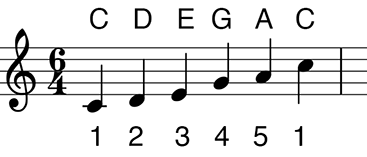
Take the natural minor scale (in this example, C minor) and delete scale degrees 2 and 6.

As with the pentatonic major example, this leaves an ANHEMITONIC scale. Because we eliminated 2 notes from our 7 note scale, we are left with a 5 note, anhemitonic scale. This is the
PENTATONIC MINOR SCALE
The PENTATONIC MINOR scale uses scale degress 1, b3, 4, 5, b7 from the natural minor scale.
It is often heard in the music of the Andes, such as "El Condor Pasa" (Alomía Robles, 1913). It's also heard in a lot of rock and blues, such as "Bombtrack" (Rage Against The Machine, 1991) and "Voodoo Chile" (Jimi Hendrix, 1968).
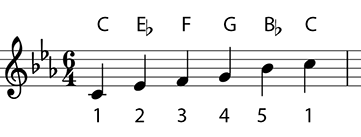
THE FOLLOWING ARE APPROXIMATIONS
We will be playing the coming examples with guitar and piano. Both of these instruments are of Western tuning and temperament.
Many instruments from the East, such as the "koto" are tuned using scales and tones that are based on different standards and also often use
"microtonal" intervals.
The CHINESE MONGOLIAN SCALE is the exact same as MAJOR PENTATONIC. Below we will use our C pentatonic major scale. Beneath the staff you will see how the 5 notes are each given a name: GONG, SHANG, JUE, ZI and YU.

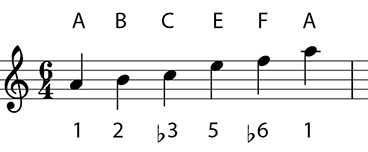

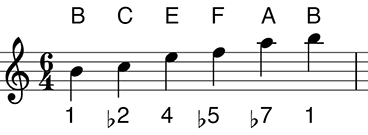
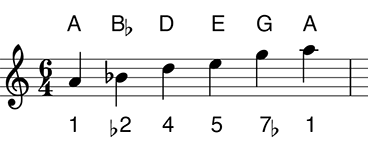
The YO SCALE consists of scale degrees 1, 2, 4, 5, and 6 of the major scale. It is 4th mode of MAJOR PENTATONIC scale. Though it’s the 4th mode, it’s not rooted in F. We’re not in MAJOR. We’re in PENTATONIC. Therefore, G is the 4th scale degree of C Pentatonic. See below how they correspond.
-C Major Pentatonic: C D E G A
-G Yo Scale: G A C D E
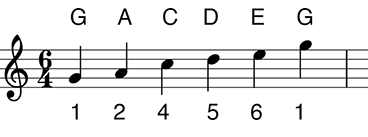
-Children are often attracted to and easily familiarized with the pentatonic scales.
-If you want to try your hand at soloing, the pentatonic scales are a great place to start.
